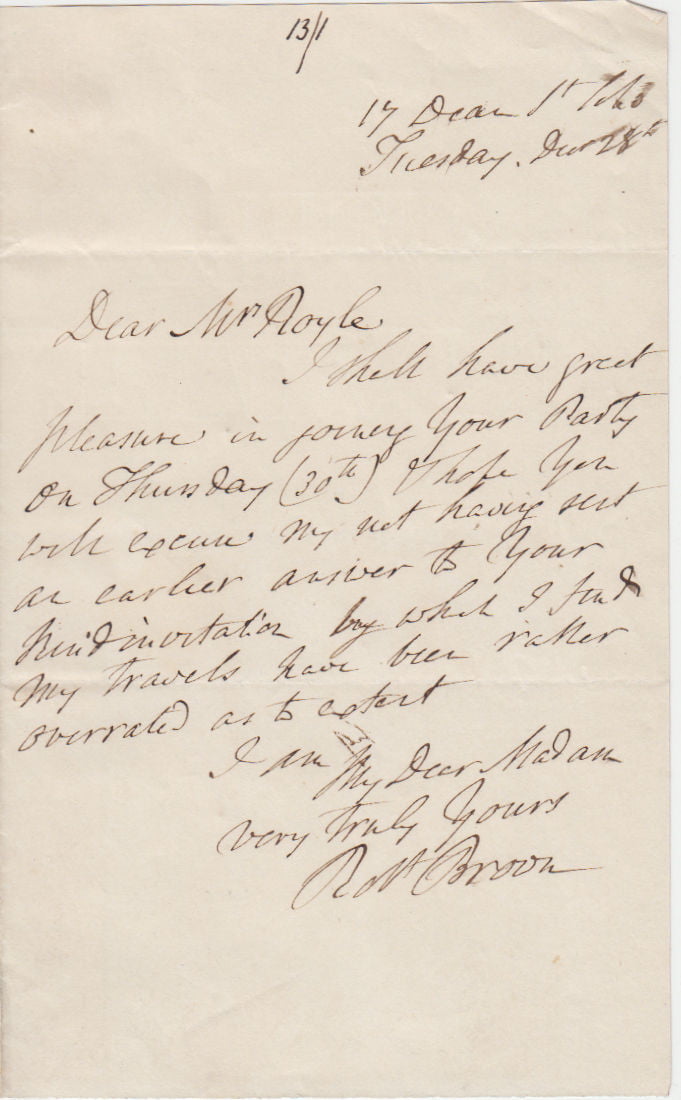Description
Autograph Letter Signed ‘R.Brown’, to Mrs. Royle, accepting her invitation to join her Party, explaining the delay to his letter of acceptance because he now finds “my travels have been rather overrated as to extent”. A good one page example, 7 x 4½ inches, from an album of correspondence compiled by John Forbes Royle. Numbered 13/1. 17 Dean Street, Soho, Tuesday 28 December, no year given [watermark 1840]. Scarce. Robert Brown (1773-1858), botanist, and explorer in Australia with Matthew Flinders. In 1800 Matthew Flinders put to Sir Joseph Banks a proposal for an expedition that would answer the question whether New Holland was one island or several. Banks approved Flinders’ proposal, and in December 1800 wrote to Brown offering him the position of naturalist to the expedition. The Investigator arrived in King George Sound in what is now Western Australia in December 1801. For three and a half years Brown did intensive botanic research in Australia, collecting about 3400 species, of which about 2000 were previously unknown. In Western Australia alone he is the author of nearly 1200 species. In 1810, he published the results of his collecting in his famous Prodromus Florae Novae Hollandiae et Insulae Van Diemen, the first systematic account of the Australian flora. That year, he succeeded Jonas C. Dryander as Sir Joseph Banks’ librarian, and on Banks’ death in 1820 Brown inherited his library and herbarium. This was transferred to the British Museum in 1827, and Brown was appointed Keeper of the Banksian Botanical Collection. Brown made important contributions to botany largely through his pioneering use of the microscope. His contributions include one of the earliest detailed descriptions of the cell nucleus and cytoplasmic streaming; the observation of Brownian motion; early work on plant pollination and fertilisation, including being the first to recognise the fundamental difference between gymnosperms and angiosperms; and some of the earliest studies in palynology. He also made numerous contributions to plant taxonomy, including the erection of a number of plant families that are still accepted today; and numerous Australian plant genera and species, the fruit of his exploration of that continent with Matthew Flinders. Annette Royle, wife of John Forbes Royle (1798-1858), botanist.

